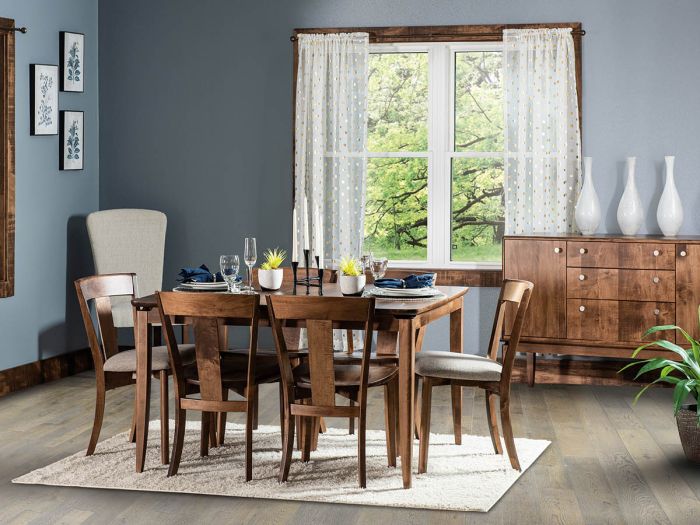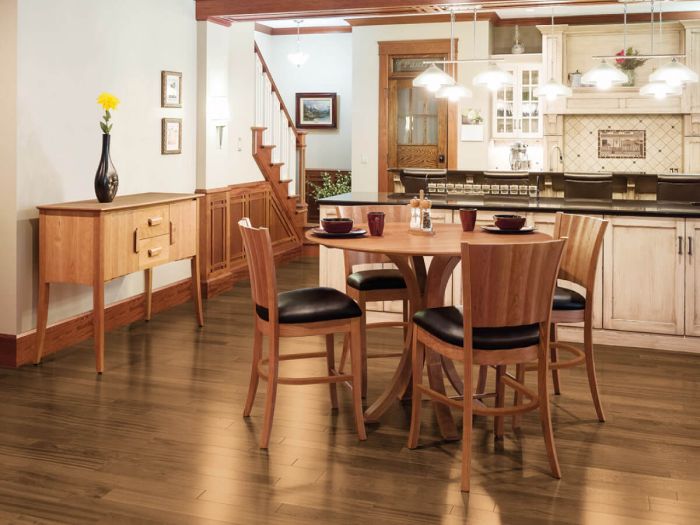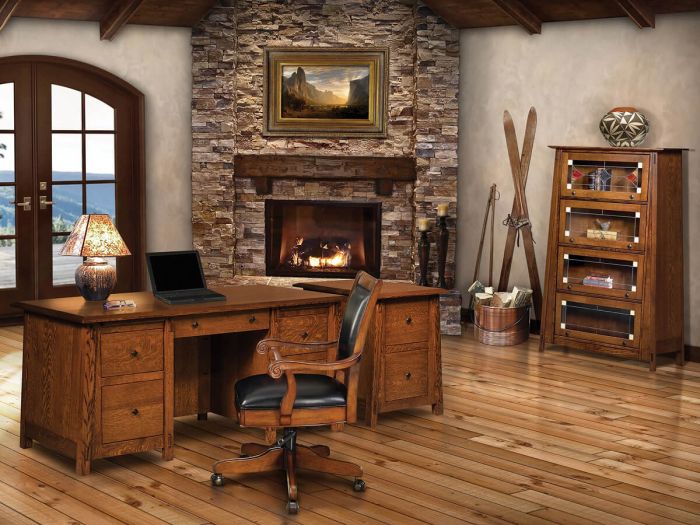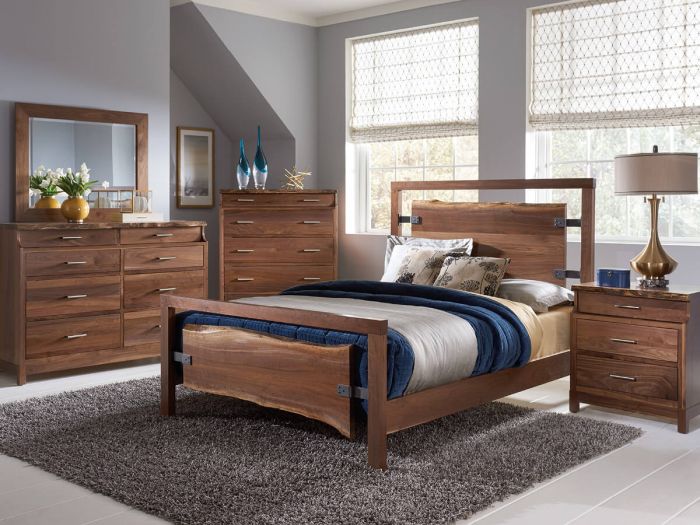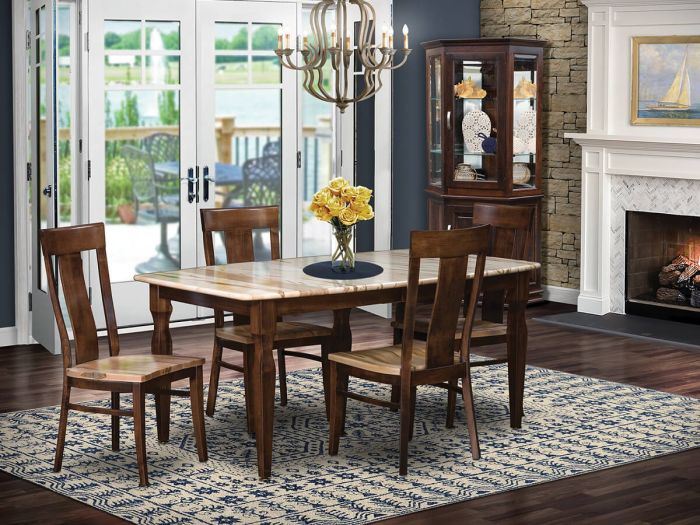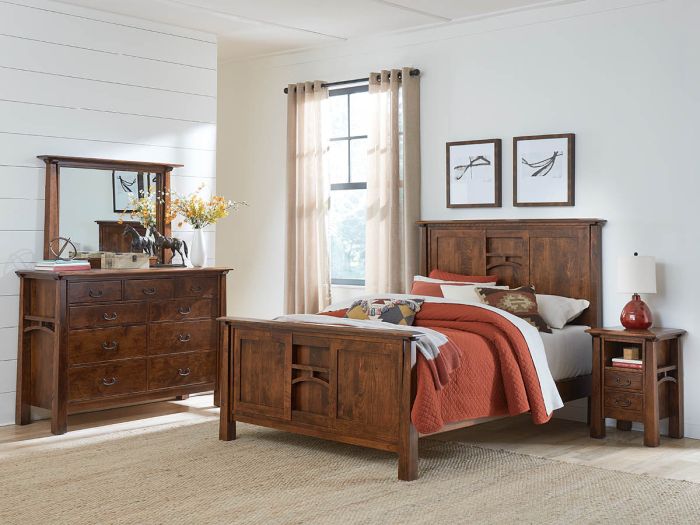How Does Hardwood Furniture Age?
By Bailiegh Basham · November 17, 2021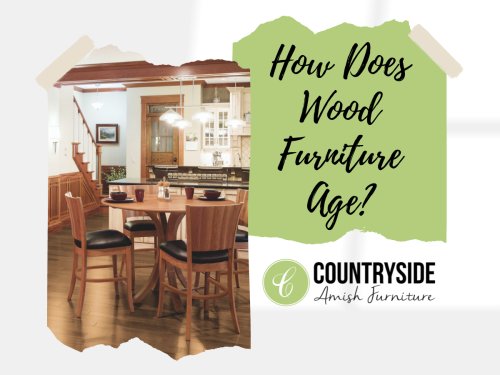
Learn How Your Amish Wood Furniture Will Age Over Time
Incorporating real wood into your home adds warmth and timelessness to any design. When you create a piece of heirloom-quality furniture, it's a good idea to think about how a piece will look years from now.
Like leather, real wood is a natural material. Inevitably, it ages and changes over time. Once a living, breathing tree, natural wood furniture will continue to evolve even after the custom piece is built. Thankfully, and similarly to leather, high-quality wood furniture only becomes more beautiful and richer with time.
But how exactly does wood age? As you might expect, different wood species react differently to typical conditions. Wood reacts to heat, light, humidity, air, and all the things that touch the wood’s surface over the decades. When wood is finished, this provides a barrier to these environmental things.
Understanding these natural changes can inform on how to properly care for and display each type of wood in your home. We will break down popular hardwood species and provide some handy maintenance tips.
Cherry
Cherry is a popular flat grain hardwood that starts lighter and takes on a beautiful reddish tone with time. The smooth, deep tones of cherry wood furniture are synonymous with luxury and antique beauty.
Cherry furniture is in a hurry to age and has a more dramatic aging process in comparison to Oak, Maple, or other wood species. Over the course of the first year, deep amber colors will start to appear. Cherry wood’s most sought-after color actually comes from after many years of aging, built up both from oxidation and sun exposure. The aging process is what makes Cherry such a beautiful and rich hardwood option.
Cherry wood is quite durable and resistant, even over time. However, it is very important to ensure your Cherry furniture is evenly exposed to light once positioned in your home, otherwise, you may experience uneven changes in hue.
Oak
Ranging in tone from a pale pink to coffee-like tan, Oak hardwood varieties are known for their distinctive grain pattern, filled with mountain peak knots or flecks of bright color.
Oak is another light hardwood that features a lot of varied graining. White Oak is lighter than Red Oak, which has a more warm tone. Unsurprisingly, White Oak furniture will turn more golden, whereas the Red Oak develops a rich and warmer red tone as it ages.
With any wood species, it’s important to note the stain color. If you get a dark stain like Kettle Black or Venezeluan Chocolate, you probably won't see a lot of color variation over time. Click here to learn about the benefits of solid oak furniture.
Walnut
Walnut is a beautiful dark brown hardwood with an unmatched density, which makes it ideal for long-lasting furniture.
The sapwood (the outer layers of a tree beneath the bark) is creamy white, and the heartwood (the dense inner part of a tree) is a richly hued brown. Over time, wood oxidizes and changes as it's exposed to light. Walnut acquires a rich patina and becomes a bit more golden. Paler, honey-like tones peek through its original dark hues as it’s exposed to light
Walnut makes an elegant and eye-catching selection for furniture of all types, such as in Countryside’s Amador Dining Table. Made in America from sustainably harvested Walnut, these extendable tables act as a sleek, modern centerpiece to any dining room.
Maple
Maple is a lighter-toned hardwood with light sapwood. The heartwood ranges from light to reddish-brown. It has a fine texture and is generally straight-grained, but is often chosen for its tiger striping, burl, and birds-eye figuring which adds one-of-a-kind character to handmade furniture pieces.
Over time, Maple will turn more golden in color, getting warmer with age. If left unstained, Maple’s color will transition into a soft golden tone, often varying depending on exposure to sun and air.
Maintenance Tips
As your furniture ages, it is always a good idea to keep care in mind. Hardwood furniture is often very straightforward to care for, but there are some simple tips to avoid any damage in the long term.
It's important to note that bright, direct sunlight contributes to the fading and bleaching of wood. We encourage you to protect your solid wood pieces from very bright, direct sunlight.
One thing that is very important with furniture is to not leave an object on the piece for an extended period, especially at first. We recommend special attention for the first month after a furniture delivery (to ensure the furniture is fully cured). You want to be sure to move around any decor you place on the piece to avoid rings or discoloration.
Table leaves should also be kept in a similar environment so they continue to match the tabletop. You may want to take the leaves out occasionally so they age at the same rate. Similarly, rotating your wood furniture will help it age evenly.
Are you concerned about adding a new piece when your current furniture has already aged? This is not an issue, but patience is key. Your new addition is going to start a different shade but will catch up with time.
Still have questions? We encourage you to contact us or check out these related articles:
- How-To Guide: Selecting your Wood Species
- How to Protect a Wood Dining Table
- How Should I Clean My Solid Wood Furniture?
- To Mix or Match? A Guide to Choosing Wood Stains In Your Home
- Wood Movement in Fine Amish Furniture
- How Long Does Real Wood Furniture Last?
- Real Wood Hardness Guide
- Rustic Elegance Decor

